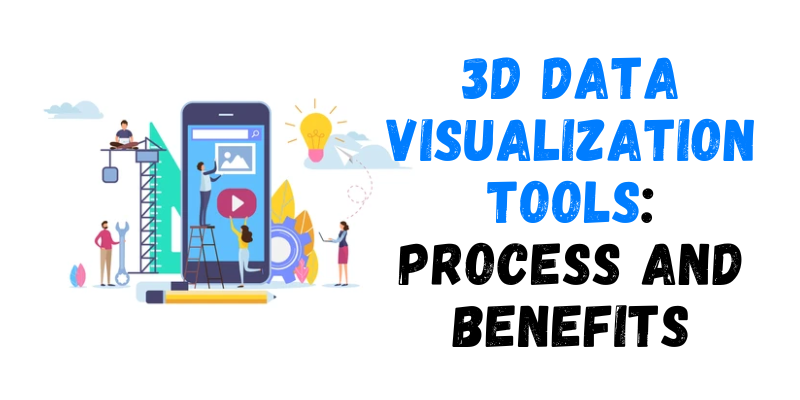The process of creating graphic content with 3D software is known as a 3D visualization. 3D rendering, excellent CGI, 3D graphics, and other similar terms exist. Producing high-quality digital content has become increasingly important as 3D visualization has grown in popularity over the last few years. This technology is used in the manufacturing, engineering, construction, entertainment, and video game industries. Join FITA Academy‘s 3D Animation Courses in Chennai to learn more about 2D & 3D Animation. It offers advanced certification training and 100% job placement assistance. This blog will go over the definition of 3D Data Visualization Tools: Process and Benefits in greater detail.
What is 3D Data Visualization?
This three-dimensional visualization is created to provide qualitative and quantitative information about an object. Height, width, and depth are all represented by three-dimensional data. A three-phase 3D visualization consists of three stages: the scene, the geometry, and the rendering. Data analysis and 3D data visualization tools become increasingly important as datasets grow. Because 3D Visualization can be viewed from any angle, it is more difficult to comprehend and complicated than 2D Visualization.
Data points are plotted on three axes in a 3D scatter plot to demonstrate the relationship between three variables. The values of the columns set on the X, Y, and Z axes determine the position of the marker that represents each row in the data table.
How to Adopt 3D Visualization?
A 3D object visualization consists of the following elements:
- Renderer
- Scene
- Camera
- Mesh
- Lighting
- Animating
Configure the scene, camera, and renderer before rendering any 3D objects to the screen. If all 3 of these conditions are met, 3d data visualization javascript graphics will be displayed on the HTML page.
Renderer
Some of the scene’s fundamental properties are set in the renderer, where the scene’s outcome is stored. There are numerous unique objects to choose from in 3D. Determine the background colour, renderer size, and pixel aspect ratio for higher-density displays. We first create a WebGLRenderer, which we then append to the DOM after passing the window size as a parameter.
Scene
Scenes contain all of the rendered objects produced by the software. There is a rendering camera, lights, objects, and characters.
FITA Academy provides Best VFX Institute in Chennai to help you hone your VFX skills.
Camera
The camera’s position, field of view, and perspective create the viewport into our scene. The visible area’s field of view is expressed in degrees from bottom to top. The Field of View, Aspect Ratio, Near Clip Plane, and Far Clip Plane, in that order.
To insert objects into the scene –
- Make a Geometry
- Make a Material
- Make a Mesh and Make a mesh for the scene.
Geometry
An object’s geometry is its mathematical formula. The geometry provides the vertices of the objects we want to include in the scene.
Material
The material of an object refers to its characteristics and how they interact with the lighting sources in the scene.
Lights
Lights are frequently visible nearby while watching any screen. They provide visual support for the model and animated direction or position—different types of light.
How Does 3D Visualization Work?
Step 1: Include the HTML file and the three.js file.
Step 2: Include the main.js code file. To add the objects, start with an empty scene.
Step 3: Insert a camera and pass the FOV (field of view), aspect ratio, near plane, and far plane parameters.
Step 4: Create a WebGL renderer, pass the window size, and append it to dom.
Step 5: Add geometry of various types such as cubes, spheres, etc.
Step 6: Add material to the scene that passes the colours and light sources.
Step 7: Using mesh, create the cube and add colours.
Step 8: Animate the scene; the animated code is placed inside the render; animate the cube’s x and y rotation.
Benefits of 3D Data Visualization
The following are some benefits of visualizing 3D data:
Impactful Communication
The user can comprehend the complexity of the data with the help of 3-D visualization by viewing the object in 3-D from the x, y, and z axes.
Design flaws identification
Users of 3D visualization can visualize objects and see design flows before they are built, which can speed up project execution.
Conclusion
In this blog, we have discussed 3D Data Visualization Tools: Process and Benefits. To learn more about such concepts and become a video editing expert, you can enrol in a Video Editing Course in Chennai, which provides the best video editing Certification Training with Placement Support.
